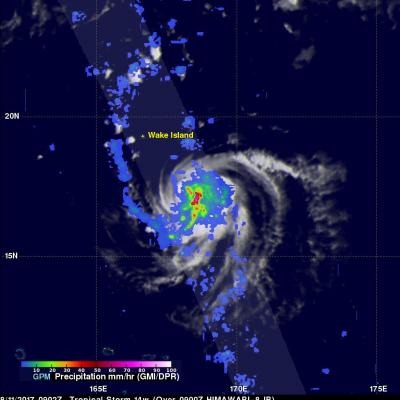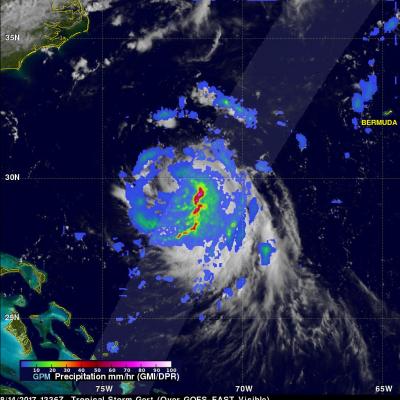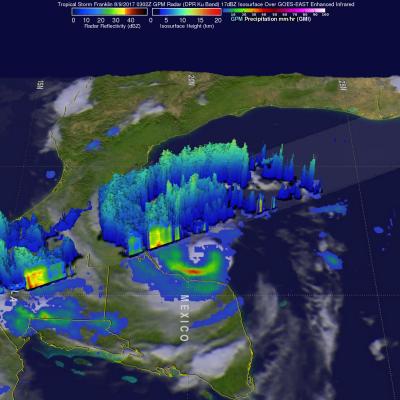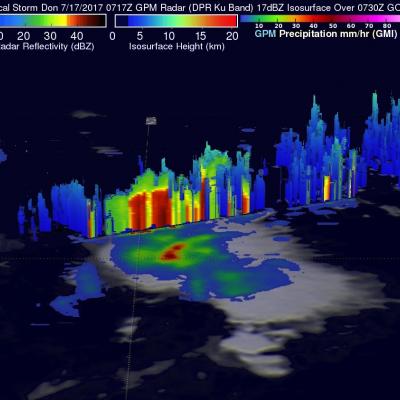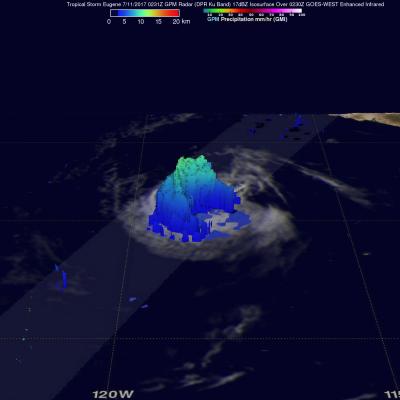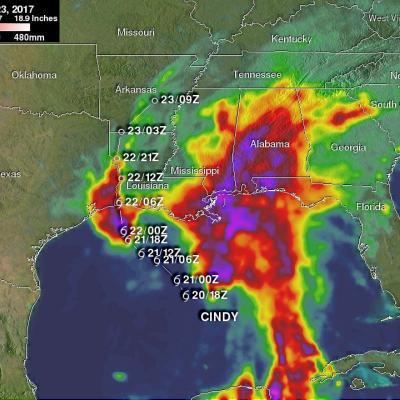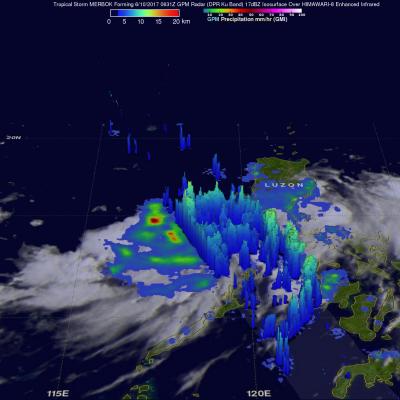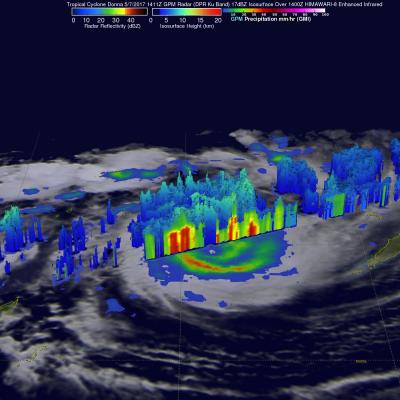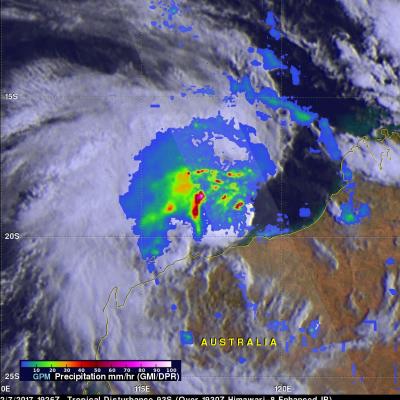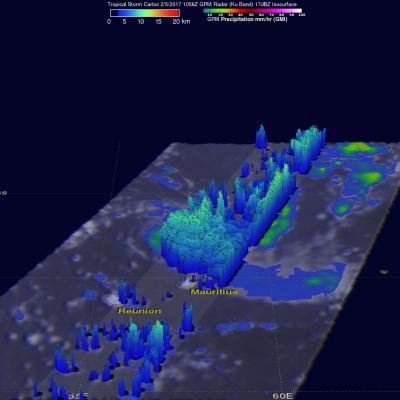Tropical Storm 14W Examined By The GPM Satellite
Tropical storm 14W formed in a remote area of the western Pacific Ocean southeast of Wake Island on August 11, 2017. The GPM core observatory satellite flew above the center of the newly formed tropical storm on August 11, 2017 at 0902 UTC. The "core" satellite carries advanced radar and radiometer systems that measure precipitation from space and serves as a standard that is used to unify precipitation measurements from a constellation of research and operational satellites. Tropical storm 14W was revealed by GPM to be small but well organized with very intense convective storms near the


